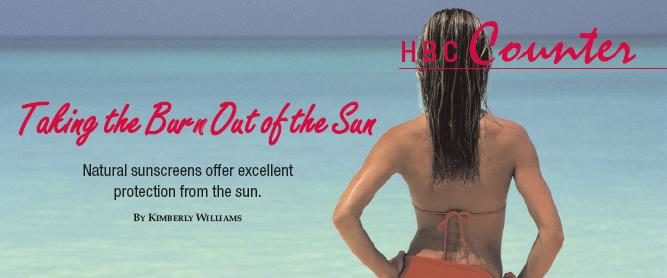It’s almost that time of year again—the sweltering summer months, when millions take to the beach and tan. Article after article, we read headlines about the value of wearing sunscreen. Why, you ask? The reduction of the ozone layer exposes us to ultraviolet radiation, which puts us at increased risk for skin cancer. This radiation accounts for elevated levels of free radicals within our bodies that can damage our skin cells and increase the likelihood of cancer. According to the American Institute of Cancer Research, “Sunlight exposure reportedly causes 80–90% of skin cancer” (1).
Melanoma and its Maladies
Many people tan because they believe it makes them look more attractive. Protection from the sun, however, is the key to maintaining healthy, youthful-looking skin and preventing conditions such as melanoma. This potentially fatal skin cancer is usually caused by prolonged exposure to the sun’s ultraviolet A (UVA) and B (UVB) rays. In its advanced form, the disease can even spread to bones and organs (2).
In 2008 alone, 62,000 new cases of melanoma surfaced in the United States, along with 8,000 fatalities, says the American Cancer Society (3). But, it doesn’t have to be fatal. “Melanoma can be successfully removed and monitored by regular skin screenings in its early stages,” says Timothy J. Turnham, executive director from the Melanoma Research Foundation (4).
The best prevention against melanoma is to use sunscreen correctly. “In order for a sunscreen to work properly, you need to apply approximately an ounce—or a full shot glass—of a sunscreen that protects from both UVA and UVB rays at least 20 minutes before sun exposure to protect your entire body, “ notes Turnham (4).
Know Your Sunscreens
So, how exactly does sunscreen work? Its ingredients are intended to absorb and/or reflect UV rays. The Sun Protection Factor (SPF) number indicates how long one can endure sun exposure before getting sunburn. The amount of sunscreen used, how often it is applied and skin type are all factors affecting whether or not the skin will burn (5). Experts recommend using sunscreen with a high SPF whenever skin is exposed to the sun and an extra high SPF on children.
Typically, consumers have two choices in sunscreens. Conventional sunscreens (sometimes referred to as organic, but not to be confused with the term associated with organic foods) contain chemicals like octinoxate and oxybenzone to absorb UV rays. However, these chemicals have the potential to seep into the skin, possibly disrupting hormonal balance and skin photoreactivity. Inorganic sunscreens, on the other hand, contain natural herbs, minerals and plant ingredients to shield the skin and filter-out ultraviolet rays.
One common natural sunscreen ingredient is zinc oxide, a mineral that protects against both UVA and UVB radiation. It also is said to have anti-inflammatory properties and may help prevent skin irritations (6).
The mineral titanium dioxide also is used in natural sunscreens. According to WebMD, titanium dioxide can be “used in creams and powders as a protectant against external irritations and solar rays” (7). This opaque ingredient reflects UV rays away from the skin and forms an immediate sun block, whereas chemical-based products may take up to 30 minutes to become effective.
Other sunscreens are sesame oil, which is said to absorb UV rays, and rice bran oil, which is hailed for its moisturizing and nourishing properties. The unique components of rice bran oil (such as oryzanol, tocopherol and tocotrienol) make it worth further examination. According to Oilseeds International, “The oryzanol, for example, can impede the progress of melanin pigmentation by restraining the erythema activity of tyrosinase as it intercepts the ultraviolet rays at the skin’s surface and hinders its (ultraviolet rays) transmission, and because of this, rice bran oil is used in sunscreen products and hair conditioners” (8).
Soothing Damaged Skin
We’ve touched on a few ways to prevent sunburn, so now let’s talk about sun-damaged skin. Topical antioxidants (like vitamin A, C, E and green tea extract) can help protect against free radical damage from the sun and may also prevent photoaging. In addition, carotenoids (like lycopene) absorb free radicals and may offer some UV protection.
Dry, sun-damaged skin may benefit from hyaluronic acid (HA), which is present in the body’s connective tissue, eyes, joints and skin. HA helps sustain the skin’s collagen fibers, allowing it to stay hydrated, maintain a natural luster and reduce scarring (9).
Numerous natural additives can also cool and comfort the skin. Aloe vera, for instance, is commonly used as a topical agent to heal wounds and to treat a wide range of skin complications (10).
So, go ahead. Grab a bottle of natural sunscreen, generously slather on the lotion and head for the oceanfront. WF
References
1. American Institute for Cancer Research, www.aicr.org/site/News2?page=NewsArticle&id=10034&news_iv_ctrl=0&abbr=pr_hf_, accessed February 8, 2009.
2. WebMD, www.webmd.com/melanoma-skin-cancer/melanoma-guide/skin-cancer-melanoma-topic-overview?page=2&print=true, accessed February 3, 2009.
3. American Cancer Society, www.cancer.org/docroot/CRI/content/CRI_2_4_1X_What_are_the_key_statistics_for_melanoma_50.asp?sitearea=, accessed February 4, 2009.
4. Communications with Melanoma Research Foundation, Timothy J. Turnham, Executive Director, February 19, 2009.
5. U.S. Food and Drug Administration, www.fda.gov/cder/Offices/OTC/understanding_spf_sunscreen.htm, accessed February 9, 2009.
6. MedicineNet, www.medicinenet.com/zinc_oxide-topical/article.htm, accessed February 4, 2009.
7. WebMD, www.dictionary.webmd.com/terms/titanium-dioxide, accessed February 4, 2009.
8. Oilseeds International, www.oilseedssf.com/products/prod_rice.html, accessed February 4, 2009.
9. Myra Michelle Eby and Karolyn A. Gazella, Return to Beautiful Skin (Laguna Beach, CA, Basic Health Publications, Inc., 2008).
10. National Center for Complementary and Alternative Medicine, www.nccam.nih.gov/health/aloevera/, accessed February 9, 2009.
Published in WholeFoods Magazine, April 2009









